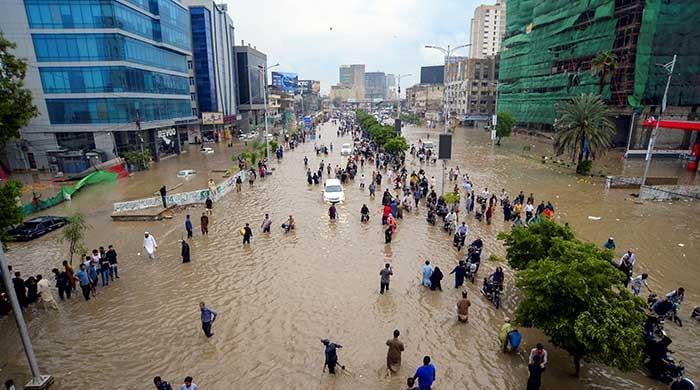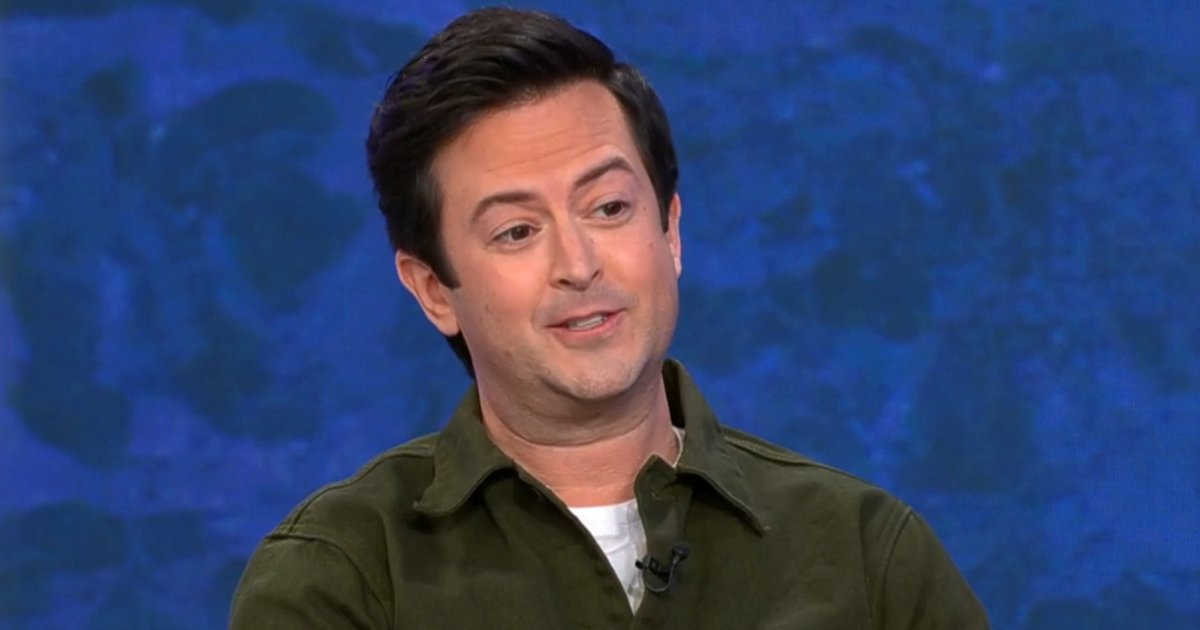Entertainment
How can we save Karachi?

The recent torrential rains — about 200 millimetres in three days — have once again exposed the chaotic and fragmented governance of Karachi. Flooding revived the confusion over which agency or municipal body is responsible for basic services, further fuelling public frustration and intensifying debates about how the city is governed.
Across the border in Mumbai, nearly 800 millimetres of rain over just four days disrupted the lives of millions, flooding roads, grounding flights, and halting train services, while large parts of the city lay submerged in waist-deep water.
Yet the comparison is striking: both cities endure the same climate shocks, but Mumbai absorbs the impact and recovers, whereas Karachi repeatedly falters. The contrast underscores a deeper reality — governance, financial capacity and urban planning make all the difference.
Karachi’s ongoing liveability crisis is highlighted by its ranking as the fourth least liveable city in the world, 170th out of 173 cities, in the 2025 Economist Intelligence Unit’s Global Liveability Index. By contrast, Mumbai stands at 121st, reflecting somewhat better, though still challenging, urban conditions.
Karachi and Mumbai are megacities of more than 20 million people. But while Mumbai has built stronger urban institutions, Karachi has been systematically weakened by political fragmentation and wilful neglect. The results are visible everywhere: in collapsing infrastructure, inadequate services, and declining quality of life.
The financial contrast is glaring. The Brihanmumbai Municipal Corporation’s 2024–25 budget is INR26,835 crore, about $3.2 billion. That equals $160 per person for a population of roughly 20 million. Nearly 76% of this revenue is raised locally — through property taxes, utility fees, and development charges — with the remainder from Maharashtra state transfers, including INR9,984 crore in octroi compensation.
This robust base allows Mumbai to keep investing in infrastructure and services year after year. Karachi, by comparison, is struggling.
The Karachi Metropolitan Corporation’s 2025–26 budget is Rs55 billion — just $196 million. Adding in other municipal agencies, cantonments, DHA and provincial departments, citywide spending is estimated at only $300 million to $500 million, though a lack of transparency makes it difficult to get a clear fiscal picture of the entire city.
For a population of 20 million, this translates to just $14.7 to $25 per person annually — six to eleven times less than Mumbai. Such chronic underfunding results in failing services, crumbling roads and water that never reaches millions of homes.
Mumbai’s suburban railway illustrates what serious urban planning can achieve. It runs across 450 kilometres of track, operates over 2,300 daily train services, and carries more than 7.5 million passengers every day. Karachi, in contrast, has nothing comparable. The city depends on decrepit buses, minibuses, rickshaws and vans — all overcrowded and unreliable.
The Sindh government has promised 8,000 electric buses, but actual delivery has barely begun. The Karachi Breeze Bus Rapid Transit project has been mired in delays.
Construction of the Green Line started in 2016, yet it was only partially opened in 2021 after funding gaps, bureaucratic hold-ups and the pandemic. For a city of this scale, the absence of functional mass transit is crippling.
Karachi’s financial and service woes are worsened by chaotic urban planning.
It has become a concrete jungle marked by rampant corruption, unchecked real-estate development and the absence of a robust local government system. Adding to the city’s planning failures, the Karachi Building Control Authority (KBCA), responsible for regulating construction and enforcing safety codes, has long been plagued by incompetence, corruption and weak enforcement. A tragic example came in July 2025, when a five-storey building in Lyari collapsed, killing 27 people.
The DHA and cantonment boards control the affluent zones — DHA spans about 36 square kilometres (1% of Karachi), Malir Cantonment about 12 square kilometres — with the six cantonments and DHA together managing 20–30% of the city.
The PPP-led Sindh government, in power since 2008, oversees the remaining 70–80%, where 17 million of Karachi’s 20 million residents live (according to the Karachi Water & Sewerage Corporation’s website). It bears the main responsibility for the city’s chronic failures and developmental decay.
Fragmentation undermines governance at its core. Each municipal or cantonment body operates independently, with little coordination to enable economies of scale, shared investments or strategic planning. The result is duplicated duties, conflicting priorities and weak accountability. Many describe Karachi’s fragmented governance as little more than the division of territory among powerful stakeholders.
Karachi’s underrepresentation in politics adds to this neglect. The city elects 22 of Pakistan’s 266 National Assembly members (8.3%) on general seats, and 47 of Sindh’s 130 provincial assembly members on general seats (36.1%), yet it holds only two federal cabinet seats (out of 43) and two provincial ministries (out of 18). The imbalance reduces Karachi’s influence in decisions about budgets and reforms, despite its economic weight and demographic importance.
The city’s failures are most visible in water. The Karachi Water & Sewerage Corporation supplies around 423 million gallons per day, barely one third of the required 1,080 – 1,200 MGD. This gap forces dependence on over 10,000 water tankers, many controlled by a “tanker mafia” accused of siphoning off an estimated 272 MGD, or 41% of the city’s supply. Karachi also loses 30 — 40% of piped water through leaks from an ageing network, some of it dating back to the 1950s.
Beyond water, Karachi suffers every day from gridlocked traffic, collapsed waste management and inadequate storm drainage that leads to floods with each monsoon. Climate risks compound these crises: heatwaves and intense storms increasingly threaten millions of residents. Informal settlements, where basic infrastructure is absent, are hit hardest.
In stark contrast, Mumbai demonstrates how strong institutions, financial autonomy and political empowerment support resilience. Its ability to raise significant local revenue, while also drawing state resources, sustains continuous investment in services. The lesson is clear: coherent governance and empowered local bodies are crucial to urban survival and growth.
Karachi, however, is governed by a model resembling urban apartheid. Affluent neighbourhoods enjoy superior services and infrastructure, while mostly middle – and lower-income areas face relentless decay and neglect under the Sindh provincial government.
The Clifton Bridge, widely seen as both a physical and symbolic divide, separates these privileged enclaves from the rest of the city. While around 380,000 residents live south of the bridge, 98% reside beyond it, highlighting a stark boundary between privilege and neglect that underscores the deep socio-economic segregation fracturing Karachi’s urban fabric.
The path forward demands urgent reform. Karachi must unify its fragmented municipal and cantonment authorities into a single metropolitan body to enable strategic planning, reduce waste and improve services. Strengthening local revenue collection is essential. Bold investments are needed, especially to rehabilitate water pipelines and dismantle exploitative cartels like the tanker mafia.
The World Bank’s 2018 Karachi City Diagnostic estimated nearly $10 billion in capital investment over a decade to close critical gaps in transport, water, sanitation and waste management — key to making Karachi liveable and economically competitive.
As Pakistan’s economic backbone, Karachi’s future is at serious risk. Decades of neglect, dysfunction and underfunding have brought the city to the brink. Without bold reforms, increased funding and unified governance, Karachi faces collapse — crumbling infrastructure, rising inequality and growing unrest.
Realising its potential requires political will, competent leadership and a national commitment to save a city Pakistan cannot afford to lose.
Disclaimer: The viewpoints expressed in this piece are the writer’s own and don’t necessarily reflect Geo.tv’s editorial policy.
The writer is former head of Citigroup’s emerging markets investments and author of ‘The Gathering Storm’.
Originally published in The News
Entertainment
Kristen Bell, Dax Shepherd kids call mom villain in parents’ movie

Kristne Bell and Dax Shepherd got unfiltered feedback from their daughters on their 2012 film, Hit & Run.
During a recent episode of Jimmy Kimmel Live!, the Idiocracy star revealed that Lincoln (12) and Delta (10) saw the movie, and were stunned to see Bell’s character break up with his character.
“They were very upset,” he shared their kids’ swift and brutally honest reaction. “and what made me so happy is they were mad at Mom, not me. They thought Mom was a b—h. They thought Daddy was a good boy with a bad past, and she should be able to overlook that, and I agree.”
Bell sitting beside her partner on the November 28 episode laughed off the critique.
She noted that the kids ultimately liked the movie.
“We spent we spent all this time making this independent film and Daddy wrote it and directed it and they were like, ‘We want to see it,’” Dax continued.
“And we hadn’t watched it in forever. We like, ‘OK, let’s watch it with you.’ They loved it. It’s very inappropriate. And it was a great litmus test for our children.”
Entertainment
Richie Moriarty on season 5 of "Ghosts," his character and the cast: "We really are a family"

Actor and comedian Richie Moriarty talks with “CBS Mornings” about the fifth season of the comedy series “Ghosts,” what’s next for his character and how the cast has bonded.
Source link
Entertainment
What’s keeping drivers from buying EVs? Key reasons at a glance

The ongoing mobility evolution normalising electric vehicles (EVs) is commendable, and it is sufficient to compel drivers into buying one, for EVs are eco-friendly, fun to drive, and are widely believed to cut fuel/energy costs. Yet the adoption of EVs is not being preferred over combustion engine vehicles, meaning the transition may be stalled.
Let’s delve deeper into what is really impeding the reception of EVs despite countless automakers churning out a myriad of flashy electrified vehicles, equipped with high-end, sophisticated tech.
Affordability: The biggest roadblock
First things first, one must bear in mind that EVs definitely cost a fortune—courtesy of the tech underneath, its costs and the meticulous engineering behind. The pricey aspect of low EV reception is also backed by Ashley Nunes, a senior research associate at Harvard Law School, as she says: “We looked at 13 years’ worth of electric vehicle prices in the US, and in inflation-adjusted dollars, the average price of an EV is going up, not down.”
Despite a 25% drop in battery prices in 2024, EVs still have higher upfront costs than petrol vehicles, especially in markets with limited subsidies or high interest rates. As per the data, China is leading in EV affordability, with two-thirds of battery electric vehicles (BEVs) sold in 2024 priced lower than their internal-combustion counterparts. Emerging markets like Thailand, Brazil, and Indonesia are also benefiting from affordable Chinese models.
In contrast, European markets seem unfortunate as they registered a trivial change in EV pricing, with significant premiums for BEV SUVs. The US is facing similar challenges, with high prices limiting mass adoption.
Charging infrastructure
Across regions, charging availability is another grave bottleneck, because even in countries with rapidly expanding public networks, many drivers are worried about EV charging infrastructure. Urban dwellers of apartments and households without off-street parking face significant hurdles installing home chargers—an issue common from the US to Europe to parts of Asia.
Meanwhile, public charging is growing, but at an inconsistent pace. Some regions have established extensive, fast-charging systems, while others are relying on slow chargers or have networks prone to outages.
Even in areas with plenty of chargers, compatibility issues, queues during peak time, and variable pricing negatively affect consumer confidence.
Thus, for most people, the question isn’t just whether EVs are technologically capable—it’s whether they can be conveniently powered.
EV performance issues
Besides the limited range in EVs, another anxiety which continues to deter buyers is performance, a key factor when daily commuting is in question. While drivers in colder climates worry about range degradation in winter, rural and long-distance drivers question whether charging stops will extend their journeys.
And while modern EVs perform well for most urban travel conditions, options suitable for towing, large-family transport and heavy hauling are still not in abundance.
In many countries, EVs are often purchased as complements rather than replacements. Households buy an EV for short trips while keeping a separate petrol vehicle for long-distance or heavy-duty needs. This treatment signals not only uncertainty but also the limited availability of EVs that meet all use cases.
Limited availability
Another barrier to wider EV adoption worldwide is the mismatch between what consumers want and what’s available to them. Buyers chasing large SUVs, minivans, or low-cost compact models have limited EV options, and this is where China stands out for offering an incredible array, ranging from ultra-compact city cars to low-cost electric SUVs.
Notwithstanding these woes, projections by industry analysts suggest redressal, as new models planned through 2026 are expected to close many of these gaps. However, as of now, many shoppers struggle to find an EV that fits their lifestyle, budget or feature expectations.
Production challenges
EV manufacturers are adjusting expectations as adoption appears to have slowed, and some major automakers are restricting EV production plans, scaling back partnerships or delaying capacity expansions.
These shifts are equally driven by slower demand growth and partly by uncertainties in supply chains, charging network development and regulatory environments.
With automotive unions and policymakers worldwide bracing for an electric future, upcoming regulatory standards, especially in Europe, will compel manufacturers to expand affordable EV offerings.
EV sales trends
The surprising part of the picture is that global EV sales are climbing, with varied momentum. Markets such as the US and Europe have registered slow growth compared to previous rates, while China and emerging markets are accelerating, thanks to lower prices and broader model availability.
This trend was also observed in other regions, with affordability and infrastructure increasing adoption speed.
Global EV manufacturers’ total sales so far in 2025
| Manufacturer | Total EVs sold/delivered in 2025 so far | Key notes |
| Tesla | 1,217,901 vehicles (Q1-Q3 2025) | Global total for first three quarters; full-year total pending |
| BYD (BEV only) | 1.61 million (Jan-Sept 2025) | ~4.4 million vehicles (2025 estimate) |
| Rivian | Full-year forecast: 41,500-43,500 vehicles | |
| General Motors | 144,700 EVs sold in the U.S. as of Q3 2025 | US-only figure, global 2025 total not yet released |
| BMW (BEV only) | 247,025 fully electric vehicles sold worldwide (Jan-Sept 2025) | Strong global BEV growth; excludes PHEVs |
| Hyundai Motor Group | ~481,000 EVs (BEVs + PHEVs) worldwide (Jan-Sept 2025) | Hyundai + Kia combined performance |
| Volkswagen(BEV only) | 717,500 BEVs worldwide (Jan-Sept 2025) | Up 41.7% YoY compared to 2024 |
| Ford | 108,185 EVs worldwide (Jan-Sept 2025) | Based on regional reporting, no single global release |
| Zeekr | 165,346 EVs sold worldwide (Jan-Oct 2025) | Rapid global expansion, strong performance in premium EV segment |
| Xiaomi | ~257,171 EVs (Q1-Q3 2025) | Fastest-growing new entrant in 2025, driven by SU7 series |
| Geely (NEV only) | 725,000+ NEVs (Jan-June 2025) | Annual target: 3 million |
What’s the future of EVs?
Despite setbacks like unbearable prices, insufficient charging infrastructure, and performance limitations, the global EV transition is nevertheless moving forward, and more affordable models are on the horizon.
Competition in battery technology is also intensifying, and infrastructure networks are expanding with each passing year. With these elements combined, the barriers holding EV drivers back will gradually diminish, most likely.
For now, the EV landscape is one of uneven progress, not fully ready to cater to all kinds of drivers worldwide.
-

 Sports1 week ago
Sports1 week agoWATCH: Ronaldo scores spectacular bicycle kick
-

 Entertainment1 week ago
Entertainment1 week agoWelcome to Derry’ episode 5 delivers shocking twist
-

 Politics1 week ago
Politics1 week agoWashington and Kyiv Stress Any Peace Deal Must Fully Respect Ukraine’s Sovereignty
-

 Business1 week ago
Business1 week agoKey economic data and trends that will shape Rachel Reeves’ Budget
-

 Politics1 week ago
Politics1 week ago53,000 Sikhs vote in Ottawa Khalistan Referendum amid Carney-Modi trade talks scrutiny
-

 Tech6 days ago
Tech6 days agoWake Up—the Best Black Friday Mattress Sales Are Here
-

 Fashion1 week ago
Fashion1 week agoCanada’s Lululemon unveils team Canada kit for Milano Cortina 2026
-

 Tech1 day ago
Tech1 day agoGet Your Steps In From Your Home Office With This Walking Pad—On Sale This Week






